- Home
- Robert Silverberg
Across a Billion Years Page 4
Across a Billion Years Read online
Page 4
So we—
Well, as a matter of fact nothing like that has happened yet. Or is really likely to happen. But I thought I'd start this letter off with some zing. It is true, though, that we've been excavating for several days and that the site looks promising. More than promising—downright exciting.
This is the twenty-third High Ones site that's been discovered. Possibly you know that the first site came to light a dozen years ago in the Syrtis Major region of Mars and was mistaken at first for the remains of some extremely ancient Martian culture. But nothing else like it turned up on Mars, whereas a couple dozen sites very similar to it have been found on widely spaced planets occupying a sphere with a radius of about a hundred light-years. So we know that the people who left these deposits must have been members of some galactic race that covered a lot of territory in its travels. Very early in the story, the newstape reporters christened them the High Ones, and the name has stuck. Even we archaeologists use it. It isn't very scientific, but somehow it seems appropriate.
All the High Ones sites found so far follow the same general pattern. That is, they represent outposts rather than permanent settlements, as if the High Ones had sent roving bands of explorers all over the galaxy and these explorers had stopped off at a given planet for twenty or thirty or fifty years, then moved along. At each site archaeologists have uncovered typical High Ones artifacts—intricate, incomprehensible objects, usually well preserved, downright baffling in their function. The workmanship is superb. They used gold and metallic plastics as their materials, usually, and some of the artifacts seem almost new.
They aren't new. They come to us across a billion years.
We have fairly exact methods for dating ancient sites, and we know that the High Ones lived on Mars approximately a billion years back, with a possible range of error of ten million years, or one percent. The other sites have been dated at various points from 1,100,000,000 years ago to 850,000,000 years ago. Which tells us two significant things:
—That the High Ones had developed a galactic civilization at a time when nothing more complex than crabs and snails had evolved on Earth.
—That the High Ones' culture underwent no significant changes over a span of a quarter of a billion years—which indicates a rigid, conservative, fully mature civilization that endured for a period of time that makes me dizzy to think about. We look upon the ancient Egyptians as a stable bunch because their civilization remained basically the same for about three thousand years. Zit! What's three thousand years against 250,000,000?
The High Ones have handed us a huge batch of puzzles. Such as the question of their origin. We haven't yet found any High Ones outposts beyond that hundred-light-year radius. Of course, we haven't done much real exploring beyond that radius ourselves, although we've had ships out as far as eight hundred light-years from Earth. But the total absence of High Ones traces on all the outer worlds examined so far is odd.
One school of thought argues that the High Ones are native to our galaxy and originated on one of the planets inside the hundred-light-year zone. The fact that we haven't yet found anything like a major city of the High Ones is irrelevant; sooner or later we'll come upon the planet from which all the scouting parties set out. Dr. Horkkk is the leading exponent of this theory. In our group Leroy Chang supports him.
The other notion is that the High Ones came from someplace far out—100,000 light-years away, maybe, at the other end of our galaxy—and hopped over most of the intervening stars to make a long and leisurely exploration of our little corner of the universe. Maybe they even were extra-galactic, say, from the Magellanic Clouds, 200,000 light-years away, and devoted a couple hundred million years to an examination of our galaxy. Dr. Schein buys the extra-galactic theory. So does Saul Shahmoon.
Naturally, Dr. Schein and Dr. Horkkk don't ever cross swords openly over their differences of opinion. It just isn't done. When two top scientists disagree, they do so in the pages of learned journals, with festoons of footnotes and a lot of carefully antiseptic prose that says, in not so many words, "My respected opponent in this discussion is a chimpo quonker." If they happen to meet face to face, or especially if they find themselves on the same field expedition, they remain icily polite, never even mentioning the issue in dispute, although under their skulls they can't help thinking, "My admired colleague here is a chimpo quonker."
The rest of us aren't bound by the code duello that governs men at the summit of a field. So we've taken sides and we yammer a lot about our ideas—more for the sport of it than anything else, since we have no real knowledge to go by.
"Obviously extra-galactic," says 408b crisply. "The total absence of evidence except in one insignificant corner of the galaxy means that they must have come from—"
"Cut it," Mirrik bellows. "One of these days we'll find their home world, right close at hand, and—"
"Nonsense!"
"Feeby foolery!"
"Unscientific blenking!"
"A lot of silly fission!"
"Ignorance!"
"Idiotic slice!"
"Intellectual nilliness!"
And so the quonking goes, far into the night. Mirrik and Steen Steen back Dr. Horkkk on the local-origin theory, and so does Jan Mortenson, although not very firmly. 408b and I line up with Dr. Schein and the extra-galactic-origin theory. Kelly Watchman is neutral, because it's not in the nature of androids to get excited about theories when they lack enough facts to make a logical judgment. Pilazinool, our specialist in intuitive analysis, is also silent on the subject. I'm sure he has his private opinions, but it isn't his habit to air them until he feels ready to issue a complete statement. When he does issue a complete statement, it isn't intended as a topic for debate; it's meant as The Word. Pilazinool therefore is careful not to try to give The Word until he knows what it is.
Why am I on Dr. Schein's side, you ask? How can I be on anybody's side when we don't really know a thing?
Simple. You know I have a romantic streak, Lorie. Otherwise I wouldn't be out here doing what I'm doing, in defiance of my father's notions of what I should be making out of my life. And so I automatically incline toward the theory that lights the most lights in my imagination.
If the High Ones did originate someplace within a hundred light-years of Earth, they have to be extinct now. If they still existed we'd certainly have bumped into them by this time.
If they came from some other galaxy, though, they may still be thriving out there somewhere. I like to think that they are. A race that can last a few hundred million years without blowing itself up—and we know that they lasted at least that long—can probably be considered just about immortal, as races go. And so, if Dr. Schein's ideas are correct, it's at least possible that the High Ones inhabit some other galaxy, living in all their ancient splendor, and that we may some day stumble upon them, who knows where? The Magellanic Clouds, M31 in Andromeda, the spiral galaxy Ml04 in Virgo, anywhere.
Let me quickly add that neither Dr. Schein nor any other reputable archaeologist has suggested that the High Ones still survive. A billion years is a long time even for a civilization of superbeings to endure. It is strictly my own wild notion that they linger on. The night I took my walk with Jan, I let a little of this emerge, and she was appalled.
"Nothing lasts a billion years, Tom!"
"You're judging by Earth standards. Just because we're newcomers to the universe, that doesn't mean—"
"But there isn't any intelligent race anywhere that's remotely that old!" she protested. "The Shilamakka are about the oldest race in the galaxy, aren't they? And they evolved only about fifty million years ago. Whereas our own species doesn't even go back half a million years. And the Calamorians are even newer, and—"
"We have proof that the High Ones were able to survive across a span of 250 million years, Jan. So we know they had staying power. They could very well still-"
"What about evolutionary changes? In a billion years they'd have evolved out of all recognition!"
/>
"Don't you think they could control their own genetic flow?" I asked. "A conservative race like that wouldn't allow random mutations. They'd keep themselves intact and unchanging."
"And what about the natural resources of their home planet? Wouldn't those have been exhausted long ago?"
"Who says they're still living on their original planet?"
Jan wasn't convinced. I have to confess that I wasn't, either. The thought that one species can keep a civilization running for as much as a million years is more than an Earthborn type like me can comprehend. To talk about survival over a billion years—it sposhes the mind just to imagine it.
And yet—Lorie, I want them still to be out there somewhere. I can't bear to believe that such greatness could ever have come to an end and vanished from the universe. The last of the High Ones, the death of a civilization millions of years old, no momentum left, cultural exhaustion, maybe—I reject it. Perhaps because to accept the passing of the High Ones means to accept the passing of Earthman culture some day. None of us ever believes in the possibility of his own death. Certainly not in the death of his species, his civilization. And if I believe in the immortality of the human race, as I can't help doing, how can I believe that this much greater race of High Ones could have been mortal? No. I tell myself that they cling to existence far from here, in another galaxy, even though they may have forgotten how at one time they visited a neighboring galaxy where intelligent life hadn't yet evolved. Ours.
There. That's your chimpo brother talking, handing out the same sort of zooby romanticism that he always peddled. You used to tell me that I didn't have the true scientific attitude of objectivity. Maybe you were right.
* * *
I see that I haven’t managed to say much about what we’ve accomplished here so far.
The basic thing about working at High Ones sites is that they’re so fantastically old that the usual techniques of archaeology can’t be applied. We’re paleo-archaeologists rather than archaeologists. We can’t just clear sand or dirt out of a site, the way the boys do on a dig in Egypt or New Mexico, and start hauling up artifacts. Over a billion years sand or dirt turn to stone. We have to carve all our finds out of solid rock.
For this we can use standard methods, up to a point. We clear away overburdens of soil with power shovels, with hand tools, and with bulldozers, including Dinamonians like Mirrik. When the heart of the site is exposed, though, we have to use vacuum-corers. These peel the rock away literally a molecule at a time, laying bare the artifacts we're after. If your vacuum-corer operator is a little on the spinless side, he's likely to chew up a few molecules of the artifact too, before he can stop.
So far Kelly has been just about perfect. She did cut into one very minor deposit, but that's forgivable; otherwise she's stripped the site with real skill. I take back all the stuff I was saying in the first cube about the inadequacies of an android vacuum-corer operator.
It took the better part of a week to get rid of the overburden, and another few days passed before we began to hit artifacts. This site is the biggest High Ones camp ever discovered, running for more than a hundred meters into the hillside. At this point we have collected a lot of standard stuff, debris discarded around the periphery of the camp, such things as—
?Inscription nodes. These are plastic tubes, about the size and shape of a cigar, usually deep green in color but sometimes blue. Along one side they bear an inscription in High Ones hieroglyphics, customarily consisting of seventy-five to a hundred symbols. At unpredictable intervals the inscriptions fade and new ones appear. This may happen when we hand a tube to someone else, when we tilt it, when the person holding it undergoes a sudden change of mood, or when it starts or stops raining. On the other hand, sometimes it is impossible to induce any change in the inscription even when all of these things occur simultaneously. Hundreds of inscription nodes have been uncovered at each High Ones site. Some have been opened; they have no moving parts and appear to be solid plastic all the way through. We understand what makes the inscriptions come and go about as thoroughly as a Neanderthal would understand where a television image comes from. We also are unable to decipher the inscriptions.
?Commemorative plaques. These are medals of some sort, about the size of large coins and stamped from some rustproof white metal. Heaps of them litter all High Ones sites. On one side they bear the image of what we assume is a High One: a humanoid creature with four arms, two legs, and a dome-shaped head. On the reverse side is an inscription in the same symbols found on the nodes. The melting point of the metal used in these plaques is upward of 3500 degrees; the metal is so extraordinarily hard that we don't see how it could have been stamped. Chemical analysis has not revealed the nature of the alloy used.
?Puzzle-boxes. Just as the name implies: these are interlocking sheets of metal arranged in a variosity of disturbing patterns. The simplest ones are moebius strips, which are just flat lengths of metal with a twist in the middle and the ends joined, so that you can run your finger along one side, keep going past the twist, and end up on the other side without ever having lifted your finger. That is, the moebius strip is truly two-dimensional, since it only has one side. Okay? Then there are klein bottles, which are three-dimensional containers that loop back on themselves so that they also have just one surface. Also there are tesser-acts, which are structures with four spatial dimensions —a tesseract is to a cube as a cube is to a square, yes? If you look at a tesseract the right way, you'll understand, but I don't recommend trying. And then there are puzzle-boxes that don't fit any mathematical theory, that fit together in odd ways so that you can trace a path down one side, and up another, and then you come to a place where the surface disappears and you're somewhere else. About a dozen different kinds of puzzle-boxes are known. Maybe the High Ones used them for intellectual amusement. There are plenty of them here, in surprisingly good shape.
?Miscellaneous artifacts. These include dials, levers, buttons that glow in the dark, small items of what we think is jewelry, prisms, gears, tubes that heat up at one end when a finger is placed at the other, and a lot more. Everything is glossy and beautifully made, even the miniatures; and everything has stood up well to a billion years of geological pressure.
As we proceed inward toward the center of the deposit, we are collecting an amazing quantity of this stuff. The density of discarded material is higher here than anywhere else, leading us to hope that this was some special place and that we're likely to find something of special significance inside. Such as a tomb. We have never, you know, discovered the physical remains of a High One. Even a fossil skeleton can't be expected to last a billion years—not intact, anyway—but it was within the grasp of High Ones technology to build a metal or plastic container capable of standing up to any kind of conditions, judging by the survival characteristics of these artifacts. Yet nowhere at any of the twenty-three sites have we come upon a burial, or even a trace of one. Since each of these sites was occupied for several decades, it's not unreasonable to think that some members of the expedition must have died in the course of duty.
Were dead High Ones taken to the home planet for burial?
Were the bodies of the dead cremated right down to the atomic level?
Or . . . did the High Ones have such enormous individual life-spans that it just wasn't statistically probable for any of them to die in any fifty-year occupation of a given site?
We don't know. But we'd love to find out for sure what the High Ones looked like.
Progress here is necessarily slow. We all dig, even the big bosses, but we can't cover more than a few cubic meters a day. Mirrik goes first, bulldozing away the overburden. Kelly moves in with her vacuum-corers and slices off a little rock. The rest of us pitch in to free whatever artifacts she's turned up. Before we can lift anything, we have to photograph it and record its position. Then it goes over to the laboratory, where Saul Shahmoon makes chronological studies. He hasn't finished dating this site yet, but he's already hinted that it'
s a pretty late one, maybe no more than 900,000,000 years old. Next, everything bearing an inscription goes to Dr. Horkkk, who collects the data and feeds it into his computer. 408b, whose specialty is paleotechnology, checks everything out mechanically, looking for insight into the ways things work. Pilazinool, meanwhile, snoops around here and there, trying to pick up the scattered clues that will allow him to make one of his intuitive judgments.
We all have this strange and mysterious feeling that we're on the brink of something important. Nobody knows why. Maybe it's just overoptimism.
We work hard. Archaeology is mostly a sore back and aching fingers. The romance gets into it afterward, when the newstape boys write their stories. In the evenings we rest, play a lot of chess, argue some, listen to the rain. I find that hour by hour I'm often bored, but that the overall effect of being here is terrifically exciting.
* * *
We are having a problem with Mirrik. If it isn't solved soon he may be dismissed from the expedition. Which would be sad, because in his ponderous way he's a delightful vidj.
I told you that Mirrik is in the alcoholism pocket, so to speak. He goes not for booze but for flowers; something in the nectar of an ordinary blossom clangs him with terrific impact. The metabolic effect of a flower on a Dinamonian must be tremendous, far more potent than alcohol is with us, since a couple of mouthfuls of flowers are sufficient to give all of Mirrik's tonnage a colossal charge.
Bleak as this place is, it's got some flowers. One of the terraforming engineers must have had a poetic soul —he planted a grove of frostflowers about two kilometers from where we're digging. The plants took hold in a few sheltered places. Mirrik, who needs plenty of exercise and likes to go on long rambling solitary roamings, found them.
I was the first to discover his secret.
One afternoon last week I was going off duty after finishing my stint at the dig when I saw Mirrik come capering toward me. He'd had a couple of hours of free time too. As he approached the site, he leaped up and tried to click his front feet together. That didn't work, and he landed in a tangle. He got up, ran in a circle, tried it again. Again he failed. He saw me and giggled. Imagine ten tons of giggling Dinamonian! He clicked his tusks playfully. He wobbled toward me, grabbed me amiably with his arms, and made me spin. This so amused him that he began a rhythmic pounding of his feet. The ground shook.

 The Longest Way Home
The Longest Way Home Hawksbill Station
Hawksbill Station A Time of Changes
A Time of Changes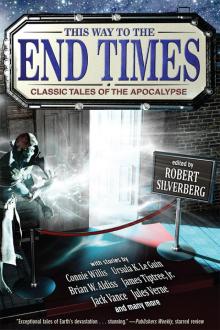 This Way to the End Times: Classic Tales of the Apocalypse
This Way to the End Times: Classic Tales of the Apocalypse Beyond the Gate of Worlds
Beyond the Gate of Worlds Lord Valentine's Castle
Lord Valentine's Castle The Man in the Maze
The Man in the Maze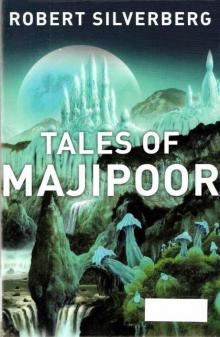 Tales of Majipoor
Tales of Majipoor Time of the Great Freeze
Time of the Great Freeze The Collected Stories of Robert Silverberg, Volume 3: Something Wild Is Loose: 1969-72
The Collected Stories of Robert Silverberg, Volume 3: Something Wild Is Loose: 1969-72 Planet of Death
Planet of Death Trips: The Collected Stories of Robert Silverberg, Volume Four
Trips: The Collected Stories of Robert Silverberg, Volume Four In the Beginning: Tales From the Pulp Era
In the Beginning: Tales From the Pulp Era Hot Sky at Midnight
Hot Sky at Midnight Valentine Pontifex
Valentine Pontifex Up the Line
Up the Line Thorns
Thorns Amanda and the Alien
Amanda and the Alien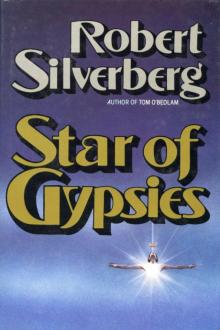 Star of Gypsies
Star of Gypsies Nightwings
Nightwings The Time Hoppers
The Time Hoppers Blood on the Mink
Blood on the Mink Dying Inside
Dying Inside The Last Song of Orpheus
The Last Song of Orpheus The King of Dreams
The King of Dreams The Stochastic Man
The Stochastic Man The Collected Stories of Robert Silverberg, Volume Seven: We Are for the Dark
The Collected Stories of Robert Silverberg, Volume Seven: We Are for the Dark The Millennium Express: The Collected Stories of Robert Silverberg, Volume Nine
The Millennium Express: The Collected Stories of Robert Silverberg, Volume Nine The Iron Chancellor
The Iron Chancellor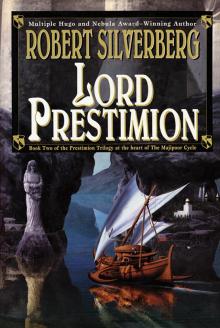 Lord Prestimion
Lord Prestimion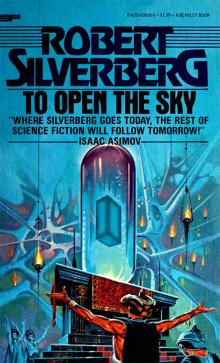 To Open the Sky
To Open the Sky The World Inside
The World Inside Chains of the Sea
Chains of the Sea The Collected Stories of Robert Silverberg, Volume Five: The Palace at Midnight
The Collected Stories of Robert Silverberg, Volume Five: The Palace at Midnight Postmark Ganymede
Postmark Ganymede The Second Trip
The Second Trip The Collected Stories of Robert Silverberg, Volume 4: Trips: 1972-73
The Collected Stories of Robert Silverberg, Volume 4: Trips: 1972-73 Son of Man
Son of Man Tom O'Bedlam
Tom O'Bedlam To the Land of the Living
To the Land of the Living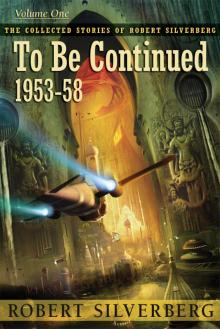 To Be Continued: The Collected Stories of Robert Silverberg, Volume One
To Be Continued: The Collected Stories of Robert Silverberg, Volume One Shadrach in the Furnace
Shadrach in the Furnace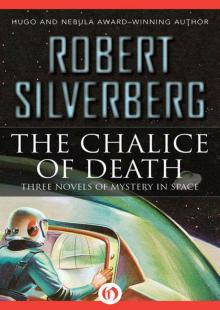 The Chalice of Death: Three Novels of Mystery in Space
The Chalice of Death: Three Novels of Mystery in Space The Queen of Springtime
The Queen of Springtime To Be Continued 1953-1958
To Be Continued 1953-1958 Legends
Legends Roma Eterna
Roma Eterna To Live Again
To Live Again At Winter's End
At Winter's End Needle in a Timestack
Needle in a Timestack To Live Again and the Second Trip: The Complete Novels
To Live Again and the Second Trip: The Complete Novels Lord of Darkness
Lord of Darkness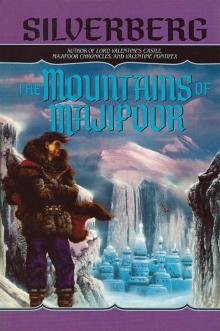 The Mountains of Majipoor
The Mountains of Majipoor The World Outside
The World Outside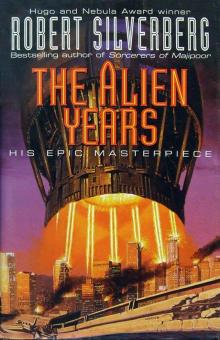 The Alien Years
The Alien Years The Book of Skulls
The Book of Skulls The Face of the Waters
The Face of the Waters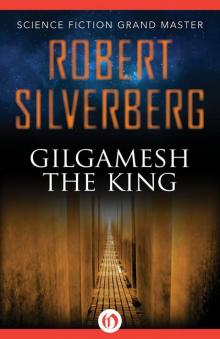 Gilgamesh the King
Gilgamesh the King The Collected Stories of Robert Silverberg, Volume 6: Multiples: 1983-87
The Collected Stories of Robert Silverberg, Volume 6: Multiples: 1983-87 The Happy Unfortunate
The Happy Unfortunate Three Survived
Three Survived Cronos
Cronos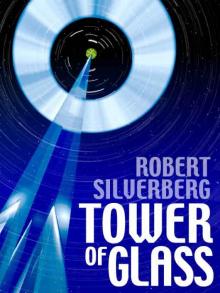 Tower of Glass
Tower of Glass Legends II
Legends II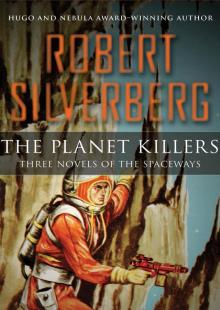 The Planet Killers
The Planet Killers The Collected Stories of Robert Silverberg, Volume 2: To the Dark Star: 1962-69
The Collected Stories of Robert Silverberg, Volume 2: To the Dark Star: 1962-69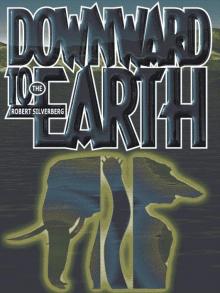 Downward to the Earth
Downward to the Earth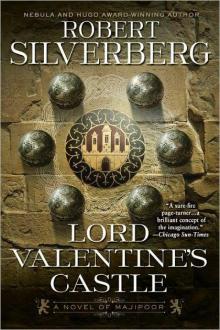 Lord Valentine's Castle: Book One of the Majipoor Cycle
Lord Valentine's Castle: Book One of the Majipoor Cycle Hot Times in Magma City, 1990-95
Hot Times in Magma City, 1990-95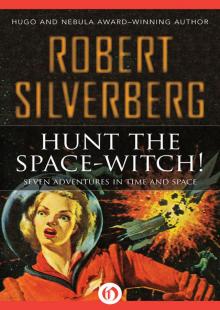 Hunt the Space-Witch! Seven Adventures in Time and Space
Hunt the Space-Witch! Seven Adventures in Time and Space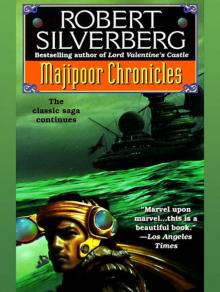 Majipoor Chronicles
Majipoor Chronicles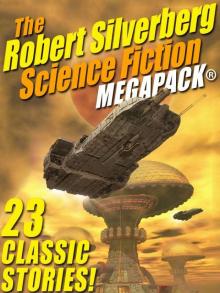 The Robert Silverberg Science Fiction Megapack(r)
The Robert Silverberg Science Fiction Megapack(r)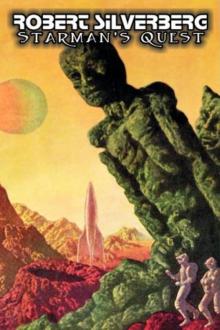 Starman's Quest
Starman's Quest Car Sinister
Car Sinister Worlds of Maybe
Worlds of Maybe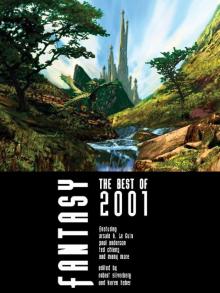 Fantasy The Best of 2001
Fantasy The Best of 2001 Revolt on Alpha C
Revolt on Alpha C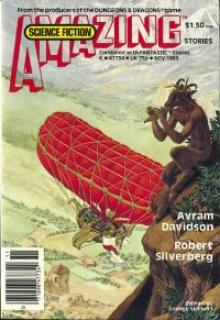 Homefaring
Homefaring The Pardoner's Tale
The Pardoner's Tale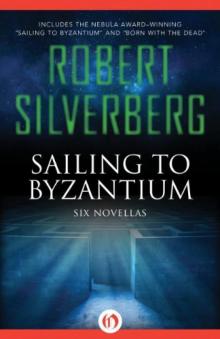 Sailing to Byzantium - Six Novellas
Sailing to Byzantium - Six Novellas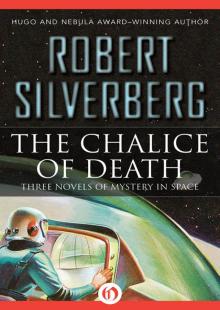 The Chalice of Death
The Chalice of Death Sundance
Sundance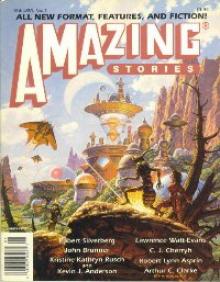 A Tip on a Turtle
A Tip on a Turtle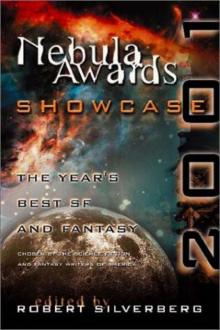 Nebula Awards Showcase 2001: The Year's Best SF and Fantasy Chosen by the Science Fiction and Fantasy Writers of America
Nebula Awards Showcase 2001: The Year's Best SF and Fantasy Chosen by the Science Fiction and Fantasy Writers of America The Fangs of the Trees
The Fangs of the Trees The Palace at Midnight: The Collected Work of Robert Silverberg, Volume Five
The Palace at Midnight: The Collected Work of Robert Silverberg, Volume Five The Millennium Express - 1995-2009 - The Collected Stories of Robert Silverberg Volume Nine
The Millennium Express - 1995-2009 - The Collected Stories of Robert Silverberg Volume Nine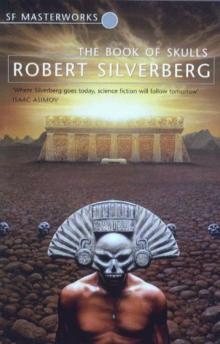 Book of Skulls
Book of Skulls Passengers
Passengers Something Wild is Loose - 1969–72 - The Collected Stories of Robert Silverberg Volume Three
Something Wild is Loose - 1969–72 - The Collected Stories of Robert Silverberg Volume Three Multiples
Multiples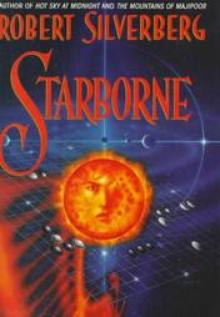 Starborne
Starborne The Masks of Time
The Masks of Time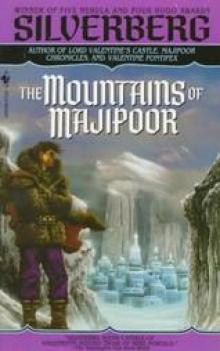 The Mountains of Majipoor m-8
The Mountains of Majipoor m-8 Multiples (1983-87)
Multiples (1983-87) Those Who Watch
Those Who Watch In the Beginning
In the Beginning Earth Is The Strangest Planet
Earth Is The Strangest Planet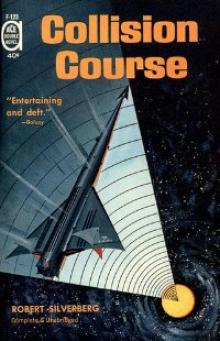 Collision Course
Collision Course Neutral Planet
Neutral Planet To the Dark Star - 1962–69 - The Collected Stories of Robert Silverberg Volume Two
To the Dark Star - 1962–69 - The Collected Stories of Robert Silverberg Volume Two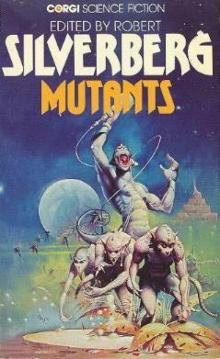 Mutants
Mutants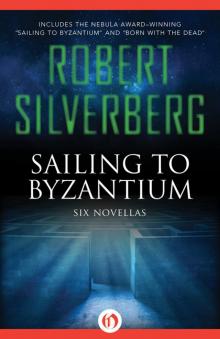 Sailing to Byzantium
Sailing to Byzantium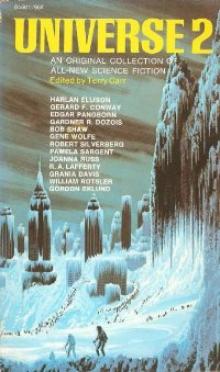 When We Went to See the End of the World
When We Went to See the End of the World Robert Silverberg The Science Fiction Hall Of Fame Volume One, 1929-1964
Robert Silverberg The Science Fiction Hall Of Fame Volume One, 1929-1964 To Be Continued - 1953–58 - The Collected Stories of Robert Silverberg Volume One
To Be Continued - 1953–58 - The Collected Stories of Robert Silverberg Volume One Valentine Pontifex m-3
Valentine Pontifex m-3 Gianni
Gianni Majipoor Chronicles m-2
Majipoor Chronicles m-2 We Are for the Dark (1987-90)
We Are for the Dark (1987-90) Waiting for the Earthquake
Waiting for the Earthquake Fantasy: The Best of 2001
Fantasy: The Best of 2001 How It Was When the Past Went Away
How It Was When the Past Went Away Beauty in the Night
Beauty in the Night The Man Who Never Forgot
The Man Who Never Forgot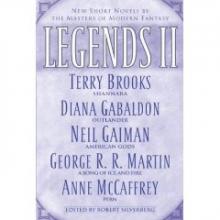 The Book of Changes m-9
The Book of Changes m-9 Lord Valentine's Castle m-1
Lord Valentine's Castle m-1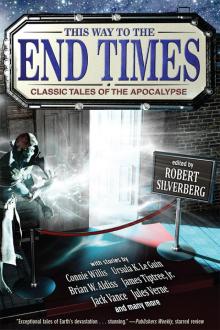 This Way to the End Times
This Way to the End Times Queen of Springtime
Queen of Springtime Legends-Volume 3 Stories by the Masters of Modern Fantasy
Legends-Volume 3 Stories by the Masters of Modern Fantasy The Palace at Midnight - 1980–82 - The Collected Stories of Robert Silverberg Volume Five
The Palace at Midnight - 1980–82 - The Collected Stories of Robert Silverberg Volume Five Something Wild is Loose: The Collected Stories of Robert Silverberg, Volume Three
Something Wild is Loose: The Collected Stories of Robert Silverberg, Volume Three Multiples - 1983–87 - The Collected Stories of Robert Silverberg Volume Six
Multiples - 1983–87 - The Collected Stories of Robert Silverberg Volume Six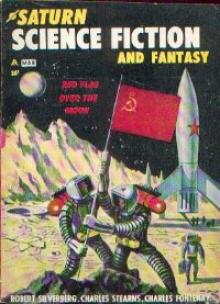 Alaree
Alaree Three Survived: A Science Fiction Novel
Three Survived: A Science Fiction Novel Defenders of the Frontier
Defenders of the Frontier The New Springtime
The New Springtime We Are for the Dark - 1987–90 - The Collected Stories of Robert Silverberg Volume Seven
We Are for the Dark - 1987–90 - The Collected Stories of Robert Silverberg Volume Seven The Science Fiction Hall of Fame, Volume One 1929-1964--The Greatest Science Fiction Stories of All Time Chosen by the Members of the Science Fiction Writers of America
The Science Fiction Hall of Fame, Volume One 1929-1964--The Greatest Science Fiction Stories of All Time Chosen by the Members of the Science Fiction Writers of America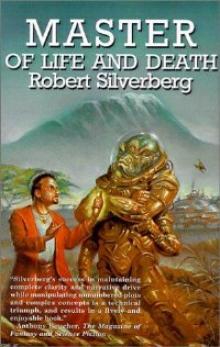 Master Of Life And Death
Master Of Life And Death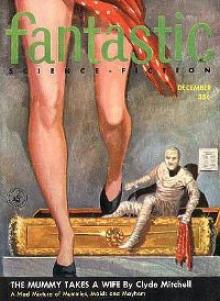 Choke Chain
Choke Chain Sorcerers of Majipoor m-4
Sorcerers of Majipoor m-4 Absolutely Inflexible
Absolutely Inflexible Trips - 1962–73 - The Collected Stories of Robert Silverberg Volume Four
Trips - 1962–73 - The Collected Stories of Robert Silverberg Volume Four Hot Times in Magma City - 1990-95 - The Collected Stories of Robert Silverberg Volume Eight
Hot Times in Magma City - 1990-95 - The Collected Stories of Robert Silverberg Volume Eight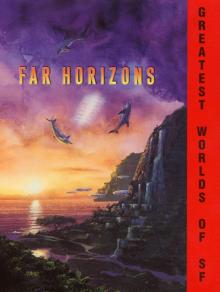 Far Horizons
Far Horizons The Queen of Springtime ns-2
The Queen of Springtime ns-2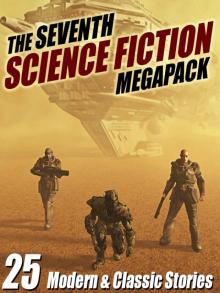 The Seventh Science Fiction Megapack
The Seventh Science Fiction Megapack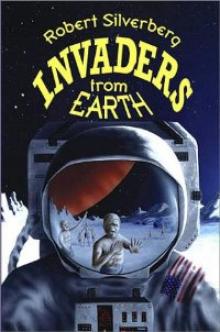 Invaders From Earth
Invaders From Earth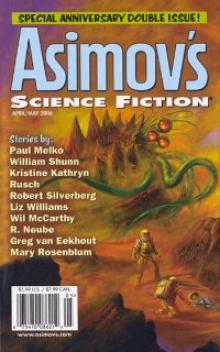 Hanosz Prime Goes To Old Earth
Hanosz Prime Goes To Old Earth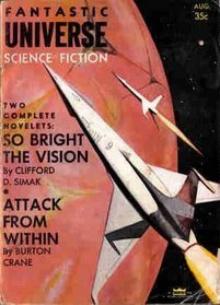 The Macauley Circuit
The Macauley Circuit Science Fiction: The Best of 2001
Science Fiction: The Best of 2001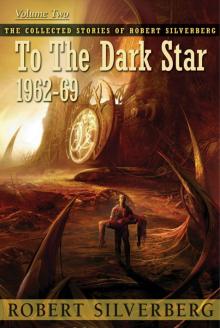 To the Dark Star: The Collected Stories of Robert Silverberg, Volume Two
To the Dark Star: The Collected Stories of Robert Silverberg, Volume Two Stochastic Man
Stochastic Man Legends: Stories By The Masters of Modern Fantasy
Legends: Stories By The Masters of Modern Fantasy To Live Again And The Second Trip
To Live Again And The Second Trip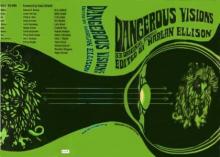 Flies
Flies The Silent Invaders
The Silent Invaders Ship-Sister, Star-Sister
Ship-Sister, Star-Sister